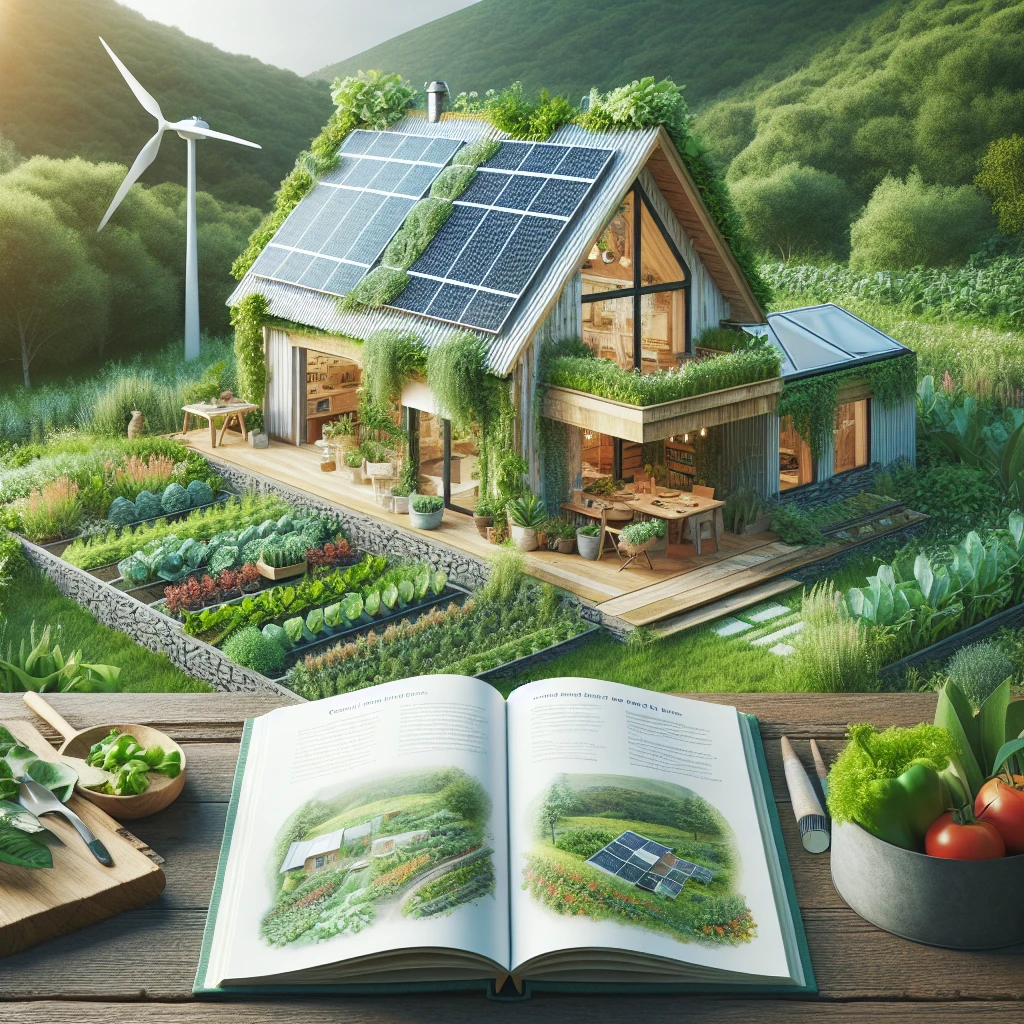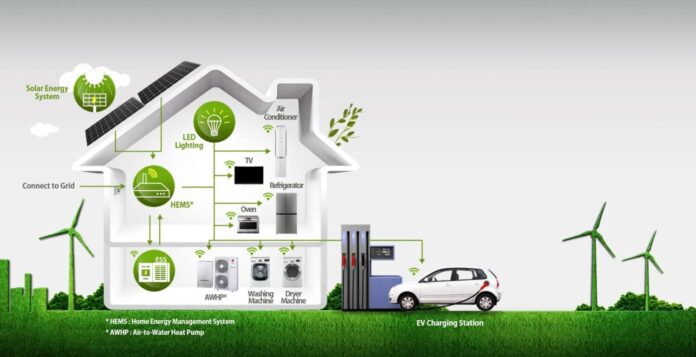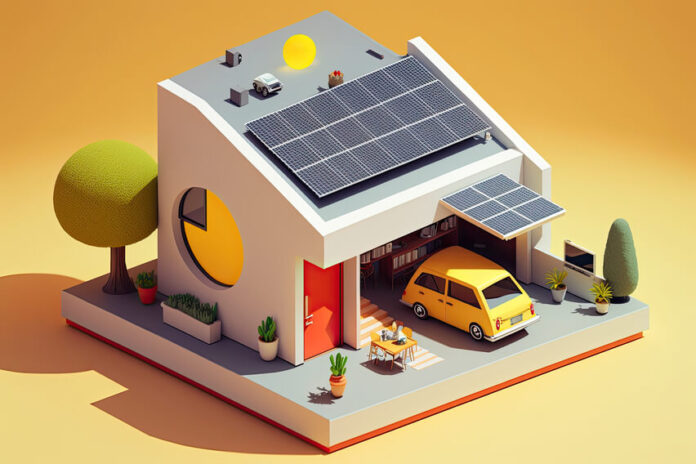As climate change becomes an increasingly pressing issue, more and more people are looking for ways to reduce their environmental impact. For many, this starts at home by making their houses eco-friendlier.
Technology is playing a key role in enabling and shaping this transition towards sustainable living. From smart home devices to renewable energy systems, new innovations are making it easier than ever for homeowners to minimize their carbon footprint.
Energy-Efficient Appliances

One of the easiest ways to “green” a home is to upgrade appliances to newer, more energy efficient models. Modern washers, dryers, refrigerators, dishwashers, and air conditioners have been designed to use less energy and water than their older cousins, saving homeowners money on utility bills while also reducing environmental impact.
Smart technology takes energy-efficient appliances a step further with models that can automatically adjust energy use based on how full they are and by usage patterns detected thanks to integrated sensors and artificial intelligence. These smart appliances connect to home Wi-Fi networks and can be controlled remotely via smartphone apps.
Lighting

Energy efficient lighting is another simple upgrade that can make a noticeable difference. Replacing outdated incandescent light bulbs with LED and CFL options (which require up to 80% less energy to produce the same amount of light) can lead to remarkable reductions in electricity usage and bills.
Smart light bulbs take these savings even further by allowing lighting adjustments through handheld remotes, smart speakers, smartphones, and tablets. Features like dimming, scheduled on/off times, circadian rhythm adjustments to support healthy sleep cycles, and automatic daylight adjustments are all easily accessible functions of today’s smart bulb systems.
These can either be programmed manually or tied into home automation platforms to respond dynamically to usage patterns and ambient light conditions throughout the day and night.
Heating and Cooling

Heating and cooling systems also benefit tremendously from those recent technological advancements focused on energy efficiency. Smart thermostats “learn” household occupancy patterns and then automatically adjust temperatures higher or lower accordingly to balance comfort and reduceenergy usage.
Connecting with geo-fencing location tracking in residents’ smartphones, smart thermostats also detect when homes are unoccupied and automatically dial back heating and cooling during those times.
High efficiency furnaces and air conditioners with adjustable fan speeds and multiple settings for different conditions provide more climate control flexibility and customization with significantly less energy consumption compared to more conventional models.
Solar Power
Perhaps the most exciting and impactfultechnologies for eco-friendly homes are appearing in the renewable energy arena.
According to the good folk at solar energy company Vivint Solar, home solar panels systems are more affordable and efficient than ever before thanks to incremental enhancements in photovoltaic technologies.
Combined with drastically improved battery storage capacities, solar power can provide clean energy to effectively run whole homes with zero greenhouse gas emissions.
With expanded solar tax credits and innovative financing models through solar leasing and community solar programs, installing rooftop solar panels offers one of the best returns on investment of any major home upgrade while slashing environmental impact.
Home Energy Management Systems

While the technologies described so far each contribute to home energy efficiency and sustainability on their own, fully integrated and automated home energy management systems are the next wave in convenience, cost savings, and reduced environmental impact.
Central dashboards give homeowners detailed tracking and control of connected appliances, lighting, HVAC systems, entertainment systems, security systems, and solar installations from one user-friendly platform.
These comprehensive home energy management networks greatly simplify transitions to green living by synthesizing data streams from diverse systems and automatically adjusting settings across devices.
The automated nature of the platforms not only yield maximal energy savings but also provide rich insights through detailed tracking of household energy use and generation trends.
Overcoming Challenges
While advanced automation and renewable energy technologies offer clear paths to environmentally sustainable home operation, widespread adoption still faces some persistent barriers.
The upfront costs of upgrades like solar panels and whole-home energy management systems can be prohibitively high despite the strong return on investment over time. This deters many homeowners who lack disposable income from transitioning to greener systems.
However, targeted incentives and financing programs from all levels of government and nonprofits are bringing innovations like solar and automated energy optimization within financial reach of more households.
And advancing cybersecurity protocols along with customer education address risks of data vulnerabilities. Ultimately relatively modest investments can tear down barriers to convert homes into environmentally regenerative buildings of the future.
The Path Forward

Technology has already profoundly expanded the ability to live much more sustainably, a trend that shows no signs of slowing.
Innovations not only enable drastically more energy efficient and net-zero emission home operation today but even bigger advances on the horizon promise deeper green transformation of the housing sector.
Hydrogen fuel cell heating systems that generate power through a reaction of oxygen and hydrogen while producing only water as a byproduct offer fossil fuel-free heating and electrical generation.
Construction innovations like 3D printed eco-housing materials made from renewable biomass resources or recycling construction waste streamline production of sustainable structures.
Locally clustered eco-villages designed around shared solar and battery storage resources known as nanogrids allow whole neighborhoods to benefit from distributed renewable power generation.
These technologies barely scratch the surface of the critical role innovation plays in building communities with net positive environmental footprints in the future.
Conclusion

There are clearly more opportunities than ever before to utilize advancing technology for monumental home energy and emissions gains.
Smart gadgets and appliances yield convenience and energy savings today through greater efficiency, control, and connectivity.
Renewable systems like home solar panels reduce reliance on carbon-intensive utilities. And automated home energy management networks optimize usage across all connected systems with minimal homeowner effort.
Despite lingering barriers to widespread deployment, improved incentives and access along with robust customer protections increasingly bring these tech-driven sustainable living tools into everyday reach.
Ultimately, ongoing innovation empowers homeowners over their environmental impact, enabling greener homes to spread rapidly on the path towards the system change needed to address climate change.






